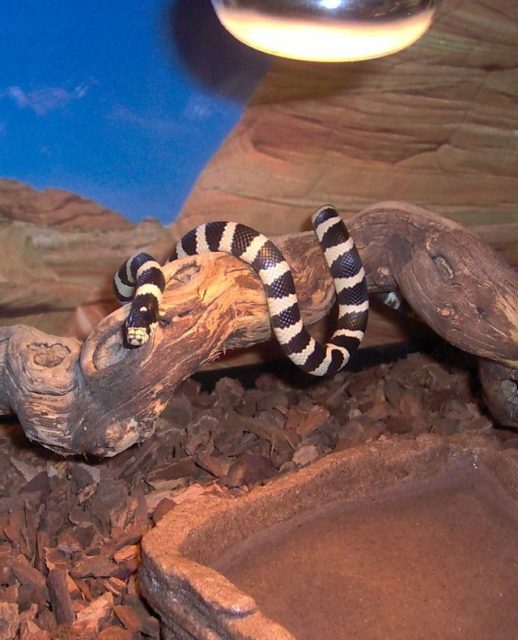Type the name of the breed you're looking for below
[wpdreams_ajaxsearchlite] Don't see the breed your're looking for? Click here and let us know!
California Kingsnake
| Place of Origin and Range | The California king snake is found in many places on the west coast, including the highest mountain ranges to approximately 6,100 ft in the south (Tehachapi Mountains) and over 7,000 ft in the south eastern Sierra Nevada Mountains, as well as southern portions of Nevada,and/or Utah, Oregon, north western New Mexico, and in extreme south western Colorado, north western Mexico. |
| Description | Black to brown with a pattern of light white, cream, or yellow stripes, bands or a combination of the two. The variations in colour are almost endless in captivity. |
| Morph Patterns Available | Yes |
| Adult Size | Can grow 3- 4 feet (0.9 - 1.2m) |
| Accommodation | Arid rocky, grassland or desert habitats work well. High humidity (between 60-80%), branches for climbing and sun bathing. A minimum of two hides, one warm and a cooler one. Snakes are cold blooded animals and regulate their body heat by soaking in the sun or hiding in the shade. A Day basking Lamp(basking spot 80'F(27'C)or some snake owners prefer under tank heating. Also you want to include a bathing dish big enough for your snake to climb in without overflowing. |
| Lifespan | Can live 15-20 years |
| Feeding / Diet | King snakes use constriction to kill their prey and tend to be opportunistic when it comes to their diet; they will eat other snakes, including venomous snakes. King snakes will also eat lizards, rodents, birds, and eggs. The common king snake is known to be immune to the venom of other snakes and to eat rattlesnakes, but it is not necessarily immune to the venom of snakes from different localities. |
| Breeding | The California King is an oviparous internal fertilization animal, meaning it lays eggs as opposed to giving live birth like some other snakes. Courtship for this king snake begins in the spring and involves the males competing for available females. Their mating ritual begins by the male snake vibrating uncontrollably. Eggs are laid between May and August which is generally 42–63 days after mating; in preparation the female will have chosen a suitable location. The typical clutch size is five to twelve eggs with an average of nine, though clutches of 20 or more eggs are known. The newborns usually emerge another 40–65 days later. |
| Other Considerations | Snakes are relatively hardy low maintenance animals when kept in the correct environment, and require little day to day care other than feeding and cleaning out the tank as required. However, like all animals, they can still become sick or injured despite our best intentions to prevent this. |



